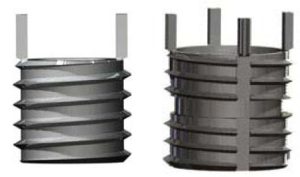
Nuts are one of the most common types of fasteners. They feature a threaded hole that supports a threaded bolt. You can use them to join two or more objects. Placing a threaded bolt through the objects and then securing the end with a traditional nut will hold the objects together. There are insert nuts, however, that feature a different design than their traditional counterparts.
Overview of Inert Nuts
Insert nuts are hollow tube-like fasteners that feature both external and internal threading. Also known as threaded inserts, they are used in conjunction with a threaded bolt — just like most traditional nuts.
Insert nuts, of course, feature an entirely different design. They are taller than traditional nuts, and insert nuts have threading on both the inside and outside. Traditional nuts are relatively short and flat. And unlike insert nuts, they only have internal threading.
Hammer-In vs Screw-In Insert Nuts
There are two primary types of insert nuts: hammer-in and screw-in. They are defined by their installation method. Hammer-in insert nuts are installed via hammering. After creating a hole in a given workpiece, you can hammer an insert nut into the hole. Most hammer-in insert nuts feature barbs that cling to the inside of the object in which they are hammered.
Screw-in insert nuts are installed via screwing. They typically feature a hexagonal head. Placing a screwdriver or Allen wrench inside of the head will allow you to install them. You can use the screwdriver or Allen wrench to turn the insert nut and, thus, screw it into the object.
What Are Insert Nuts Used For?
You might be wondering what insert nuts are used for exactly. While they support different applications, they are commonly used as wall anchors. You can install an insert nut in a wall, after which you can connect objects to the wall using a threaded bolt. Whether it’s a hammer-in or screw-in insert nut, it will grip into the wall. This is similar to a wall anchor, which also grips into walls.
Insert nuts are classified as blind fasteners, meaning they only require access to a single side during installation. You can install them by accessing the front of a wall or object. Even if you don’t have access to the back of the wall or object, you can easily install an insert nut. They are blind fasteners that, like all other blind fasteners, only require access to a single side during installation.



